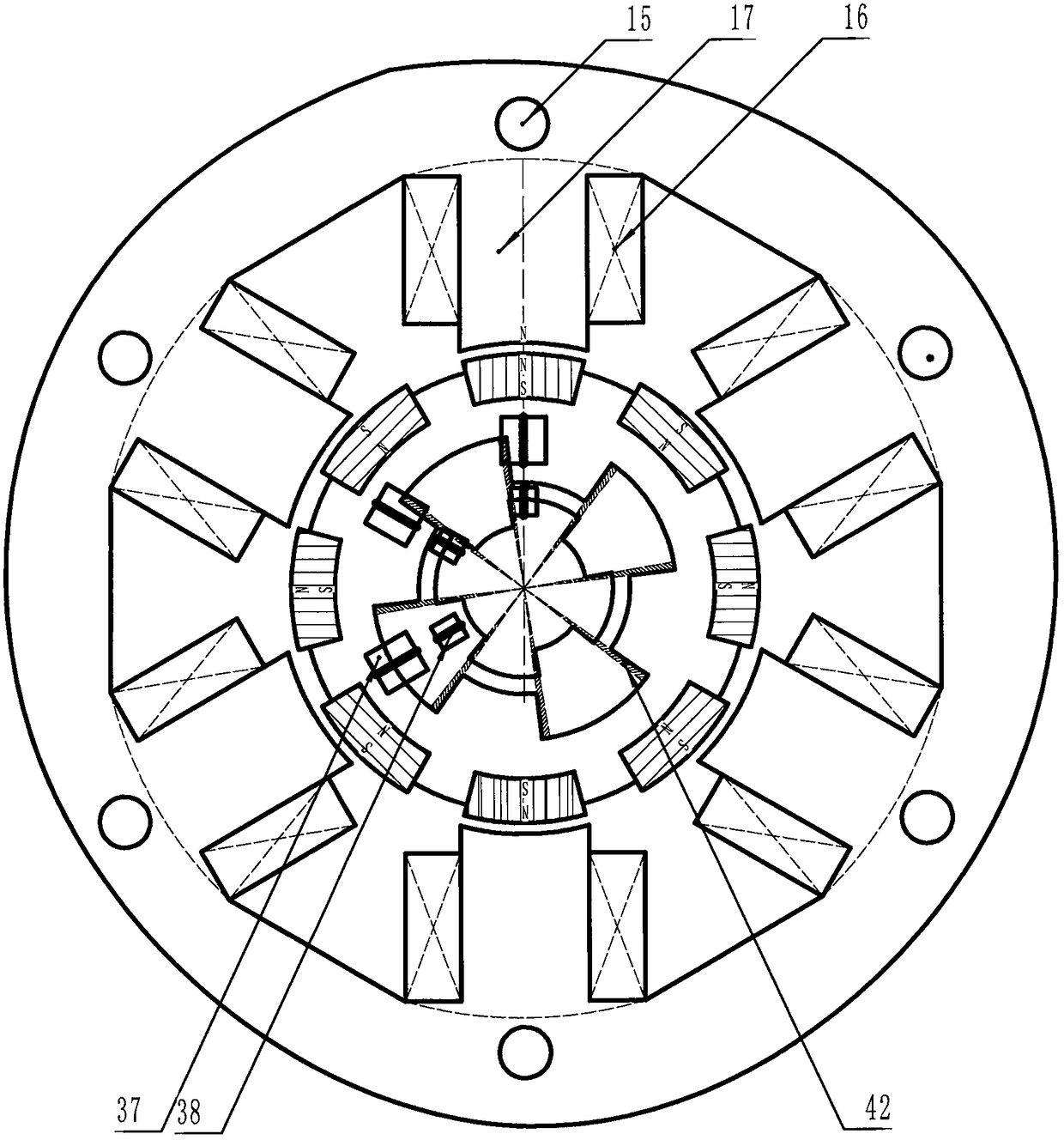Four-rotor permanent magnet switched reluctance motor
A permanent magnet switch and reluctance motor technology, which is applied in the direction of electrical components, electromechanical devices, and control/drive circuits. It can solve the problems of motor inoperability, winding magnetic field, and low work efficiency, and achieve the goal of increasing output power. Effect
- Summary
- Abstract
- Description
- Claims
- Application Information
AI Technical Summary
Problems solved by technology
Method used
Image
Examples
Embodiment Construction
[0020] The four-rotor permanent magnet switched reluctance motor is composed of rotor 1, left stator 2, right stator 3, housing 41 and controller 43; Outer rotor 26, right inner rotor 7, right outer rotor 24, left inner magnetic sleeve 5, left outer magnetic sleeve 28, right inner magnetic sleeve 8, right outer magnetic sleeve 22, left inner magnetic steel ring 6, left The outer magnetic steel ring 27, the right inner magnetic steel ring 9, and the right outer magnetic steel ring 21 are composed of; wherein the left inner magnetic steel ring 6, the left outer magnetic steel ring 27, the right inner magnetic steel ring 9, and the right outer magnetic steel ring 21 The S pole and N pole of the magnetic steel are as Figure 10 All shown are arranged upside down; and the left inner magnetic sleeve 5, the left outer magnetic sleeve 28, the right inner magnetic sleeve 8, and the right outer magnetic sleeve 22 are used to connect the left inner rotor 4, the left outer rotor 26, The ...
PUM
 Login to View More
Login to View More Abstract
Description
Claims
Application Information
 Login to View More
Login to View More - R&D
- Intellectual Property
- Life Sciences
- Materials
- Tech Scout
- Unparalleled Data Quality
- Higher Quality Content
- 60% Fewer Hallucinations
Browse by: Latest US Patents, China's latest patents, Technical Efficacy Thesaurus, Application Domain, Technology Topic, Popular Technical Reports.
© 2025 PatSnap. All rights reserved.Legal|Privacy policy|Modern Slavery Act Transparency Statement|Sitemap|About US| Contact US: help@patsnap.com



